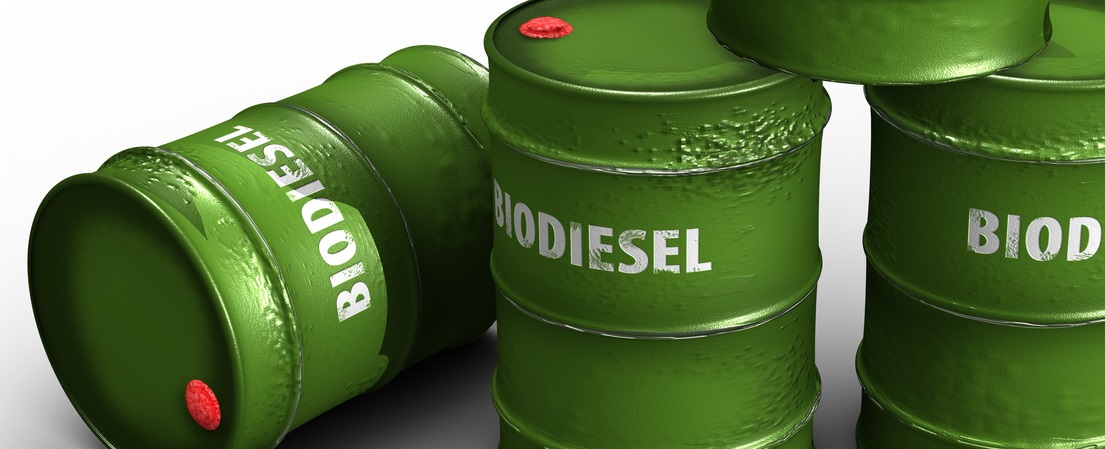
Brasil vai aumentar mistura de biodiesel e diesel para 15% até 2023
dez, 03, 2018 Postado pordatamarnewsSemana201849
O Brasil planeja aumentar a mistura biodiesel-diesel vendida na bomba para 11% em junho de 2019 e para 15% até 2023. O novo mandato deve impulsionar a produção brasileira de biodiesel para 10 bilhões de litros por ano até 2023. O país produziu 4,38 bilhões de litros de biodiesel nos primeiros 10 meses de 2018, um aumento de 24,5% ano a ano.
Fontes usadas:
Brazilian biofuels output mixed in October as harvest ends
Rio de Janeiro — Brazil’s output of sugarcane-based ethanol tumbled in October amid an end to the harvest and crushing season, while biodiesel production continued to climb on expectations for higher biodiesel mandates at the pump, according to data released Wednesday by the National Petroleum Agency, or ANP.
Not registered?
Receive daily email alerts, subscriber notes & personalize your experience.
Sugar mills produced 3.25 billion liters of ethanol in October, down from 3.46 billion liters in October 2017 and also down from 4.18 billion liters in September, the ANP data showed.
Ethanol output decreased for a third consecutive month as Brazil’s latest record-setting sugarcane harvest winds down, with cane crushing expected to decline through the end of the year. The next harvest cycle will start in March 2019.
The biofuel alternative to gasoline enjoyed surging output in 2018 amid lower sweetener prices that made ethanol production more attractive to sugar mills this year.
The hefty supplies of hydrous ethanol also pushed prices for the biofuel lower, stoking consumer demand as prices declined to less than the 70% equilibrium point with gasoline for most of the year. Motorists typically opt to fill up tanks with hydrous ethanol when the price of a liter of the biofuel is about 70% or less than the price of a liter of gasoline, which compensates for the biofuel’s lower energy content. About 90% of new light cars and trucks are considered flex-fuel vehicles that can operate on gasoline, hydrous ethanol or any combination of the two fuels.
In the first 10 months of 2018, ethanol production was 15.8% higher than the same period of 2017 at 29.5 billion liters. Hydrous ethanol competes directly with gasoline, while Brazil also includes a 27% anhydrous ethanol mixture in gasoline sold at the pump.
Sugar mills produced 2.31 billion liters of hydrous ethanol in October, an increase of 12.1% from 2.06 billion liters in October 2017, the ANP said. October’s hydrous ethanol output, however, was down 22.7% from the 2.99 billion liters produced in September, the ANP said.
Anhydrous ethanol output, meanwhile, slipped 937.8 million liters in October compared with 1.40 billion liters in October 2017, the ANP said. October’s anhydrous ethanol production was also down from 1.18 billion liters in September, the ANP said.
Anhydrous ethanol output was undermined throughout 2018 by sluggish gasoline sales, which were directly affected by the more competitive prices of hydrous ethanol during the year.
BIODIESEL BOUNCE
Biodiesel production continued to post robust results in October amid an increasingly brighter outlook for the biofuel in 2018. In October, the Mines and Energy Ministry announced plans to increase the biodiesel-diesel blend sold at the pump to 15% by 2023. Brazil currently mandates a 10% biodiesel-diesel mixture at the pump.
Under terms of the proposal, Brazil will increase the biodiesel-diesel blend to 11% in June 2019, according to the ministry. The biodiesel mandate will then increase by 1% each successive year until the 15% mandate is reached by March 2023. A final decision on the timeline for annual biodiesel-diesel blend increases will be made after motor tests on the new, higher biodiesel-diesel blends have been conducted.
The new mandate is expected to push domestic biodiesel production to 10 billion liters annually by 2023, according to the ministry’s projections. In the first 10 months of 2018, biodiesel output was up 24.5% year on year to 4.38 billion liters, according to the ANP.
Each 1% increase in the biodiesel-diesel blend sold at the pump represents about 600 million liters of additional production per year, according to the Brazilian Biodiesel and Biokerosene Union, or Ubrabio, and Brazilian Vegetable Oil Industry Association, or Abiove.
The two trade groups represent biodiesel producers in Brazil. About 77% of biodiesel production comes from soybeans, with 17% produced from animal fats and the remaining amount from raw materials such as cotton and recycled cooking oil.
Brazil produced 500.2 million liters of biodiesel in October, an increase of 22.2% from 409.3 million liters in October 2017, the ANP said. October’s biodiesel output was also up 3.7% from 482.3 million liters in September, the ANP said.
Biodiesel is only mixed with diesel sold at the pump and used in private fleets, so demand for Brazil’s most widely consumed fuel directly affects consumption of the biofuel.
Post Relacionado
-
Minérios
out, 05, 2020
0
Porto público que mais movimentou minério de ferro no 2o. semestre foi Itaguaí
-
Portos e Terminais
fev, 28, 2020
0
Movimentação de fertilizantes líquidos deve crescer em Paranaguá
-
Automotivo
abr, 15, 2024
0
Gigante chinesa BYD desembarca quase 2 mil veículos elétricos no Porto de Suape
-
Regras de Comércio
jul, 02, 2024
0
Recorde de aberturas de mercados marca o melhor semestre da história do comércio exterior para o agro



